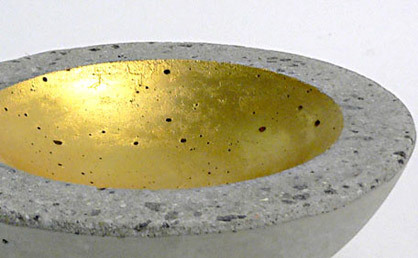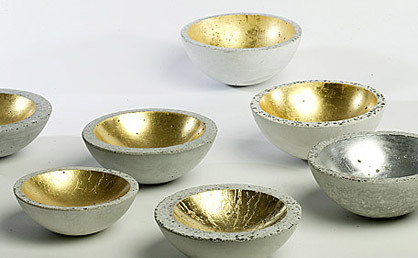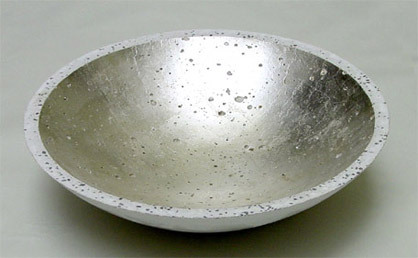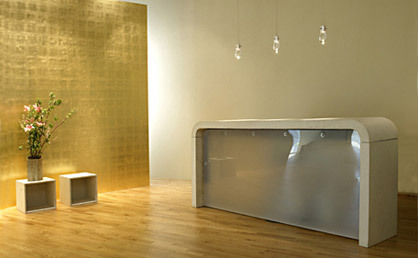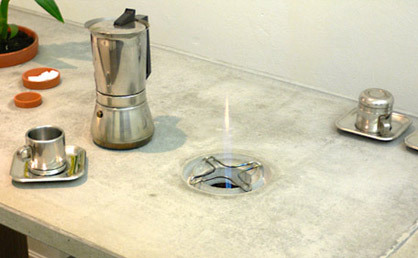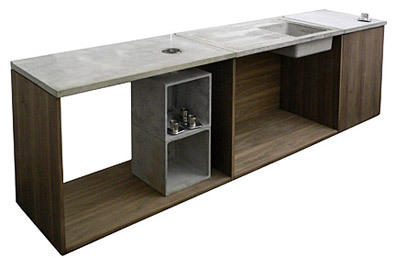Golden moon surfaces
Scritto da Susanne Junker
Berlin, Germania
19.02.08
The designer Alexis Oehler works in the heart of Berlin's Kreuzberg district, but the romantic impression given by his workshop is contradicted by the hardness and roughness of his preferred material, which normally tends to evoke associations of depressing concrete housing blocks.
In an enchanted little front garden the toddlers from a kindergarten romp and play, while next door tasty tapas tempt people to take a snack. In the entrance to the courtyard a family of cats has made itself at home, and from a workshop which is painted bright yellow come the sounds of hammering and sawing. The designer Alexis Oehler works in the heart of Berlin's Kreuzberg district, but the romantic impression given by his workshop is contradicted by the hardness and roughness of his preferred material, which normally tends to evoke associations of depressing concrete housing blocks – until the gold-leaf plated surfaces of countless bowls on shelving light up like a collection of moons. Alexis creates things in concrete, which is why his brand is called 'Betonware.'
His work covers not just the actual design but also the planning of the production process and building the moulds for pouring the concrete, right down to the act of casting and joining the individual sections and then creating the surface finish.
Alexis casts the bowls with a diameter of 8 cm to almost 50 cm in fibre-reinforced concrete which enables thicknesses of as little as 10 mm. The casting mould is formed by two identical bowl-shaped sections, while the bowl itself is created as a segment which can vary in size and thickness, depending on the extent to which the casting mould is filled. The inner surfaces with their varying patterns and water channels are all different, making each bowl unique in itself. These lunar surfaces, which can be white, gray or even black depending on the pigmentation of the concrete, are then decorated with gold leaf, silver leaf or mosaics.
Larger concrete objects such as furniture and sculpture are made by Alexis by joining together individual sections. The reception counter of a Berlin yoga studio is made of three light-weight concrete sections, produced at the workshop with integrated steel supports which bear the load of the 2.40 m long counter. The slab and the support sections are connected by 8 strong M10 screws, while the front cover is an acrylic plate which looks paper thin and mirrors a gleaming wall of gold.
But why concrete? Alexis Oehler puts down his coffee on a box made of 'cast stone' and refers to the work of Axel Schultes and Peter Zumthor. He explains:"What is impressive about concrete is the hard, cold roughness of the material as we subjectively perceive it, and above all its mass. The special attraction of complex concrete sections is the traceability of the production process – in other words the casting process. In the ideal case the shape of the work pieces as well as those of the connections to individual sections, fixing points and reinforcing elements correspond to natural organic laws. Rigid compliance with these natural laws just as much as their deliberate breach provides product qualities which cannot be achieved with any other material. The diversification of concrete which is achieved by the use of special aggregates and coating substances make possible an almost poetic use of the material with respect to the way concrete is perceived.
As a qualified industrial designer he also designs interiors and conceives events such as brand presentations for Nike and Louis Vuitton.
